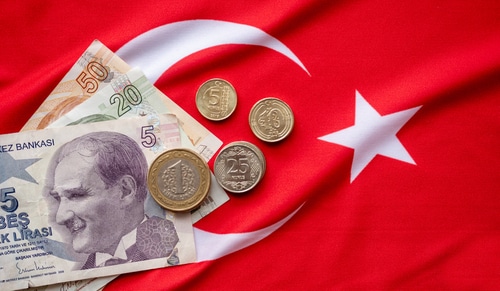The Turkish lira (TRY) is not just money you use in Turkey. It also shows the country’s long history and change over time. If you plan to travel to Turkey, want to send money to family or friends, or just want to know about money from other places, it can help you to learn about the lira. The lira started back in the Ottoman Empire. Over the years, it has changed to fight fake notes and keep up with new things in the world. Today, the lira tells the story of Turkey and its growth.
1. A Legacy from the Ottoman Empire
The word “lira” was used for the first time in 1844 when the Ottoman Empire decided to make it the main type of money instead of the kuruş. At first, the lira was a gold coin. Later, when paper money came in, people started to use “lira” for banknotes. After Turkey became a republic in 1923, the Turkish Central Bank made the first lira that had Turkish writing. This was a big change from the Arabic writing that was used on money in the time of the Ottoman Empire.
2. Mustafa Kemal Atatürk: The Face of the Lira
All Turkish lira banknotes show a picture of Mustafa Kemal Atatürk. He was the founder and first president of modern Turkey. His picture stands for the people’s respect and honor for his role as a leader. Atatürk’s face is on the front of every banknote. On the back, you can find different important people from Turkey and many signs of Turkish culture. This shows the country’s deep history and way of life.
3. Modernization: The New Turkish Lira
By the early 2000s, the Turkish lira had lost much of its value. To help with this, the “New Turkish Lira” (Yeni Türk Lirası) was brought in during 2005. This change took off six zeros from the money, which made buying and selling easier. People began to trust the money again. In 2009, the word “new” was dropped, and it was once again called just the Turkish lira.

4. Designing a Symbol: The 2012 Currency Contest
In 2012, the Central Bank of Turkey held a contest to pick a new sign for the lira. A person named Tülay Lale, who is an engineer, made the design that they chose. The new “₺” sign looks like a half-anchor with lines that point up. These lines stand for strength and for how the currency is meant to keep going up.
5. Advanced Security Features to Combat Counterfeiting
To keep Turkish lira banknotes safe from people who may try to copy them, the makers add some security features.
- Paper Quality: Real banknotes are made from 100% cotton fiber paper. This paper does not glow under UV light. For more details, see TCMB.
- Watermarks: Each note has a watermark with Atatürk’s face and the note’s number. You can see this if you hold it up to the light.
- Holographic Strips: A shiny stripe on the note lets you see color changes and moving effects when you tilt it.
These features help to show that the money is real. They also help to keep it safe from fake or illegal use.
6. Current Exchange Rate and Economic Context
As of May 2025, the Turkish lira has gone up and down in its value against big world currencies. One example is the USD to TRY exchange rate. It has changed many times during the year. This shows that the world’s currency markets can change a lot over time.
Exchanging and Sending Money to Turkey
When traveling to Turkey or sending money:
- Currency Exchange: You can get this service at airports, banks, and places that are approved to do it.
- ATMs: You will find them in many places, and most people can use them if their card works around the world.
- Money Transfer Services: Platforms like Remitly give you good rates and make it easy to send money.
Always check the exchange rates and fees before you make a choice. This helps you get the best value for your money.
Frequently Asked Questions
What denominations are available in Turkish currency?
- Banknotes: ₺5, ₺10, ₺20, ₺50, ₺100, ₺200.
- Coins: 1, 5, 10, 25, 50 kuruş, and ₺1.
Is the Turkish lira accepted outside of Turkey?
Generally, the lira is not accepted outside Turkey. It’s advisable to exchange any remaining lira before leaving the country.
How can I ensure I’m not receiving counterfeit lira?
Familiarize yourself with the security features of Turkish banknotes, such as watermarks, holographic strips, and color-changing ink. When in doubt, use official exchange centers or banks for currency transactions

